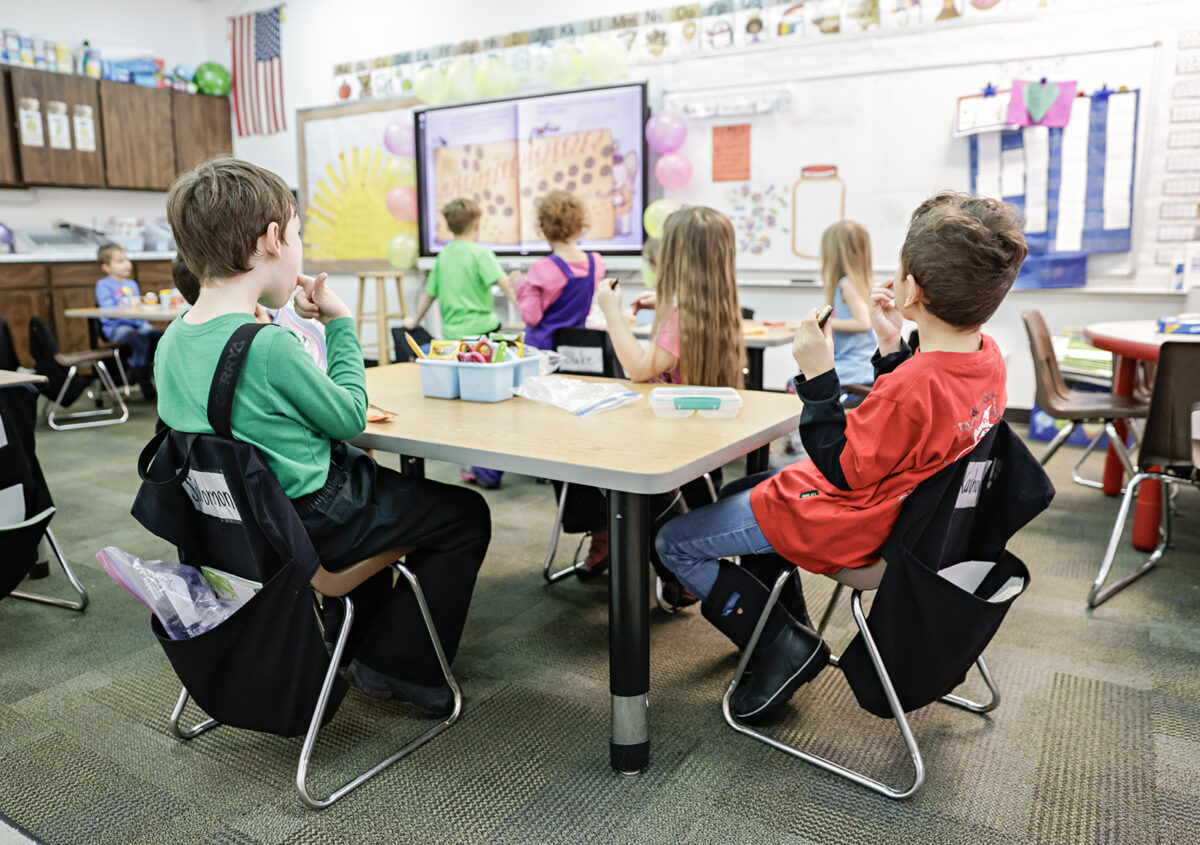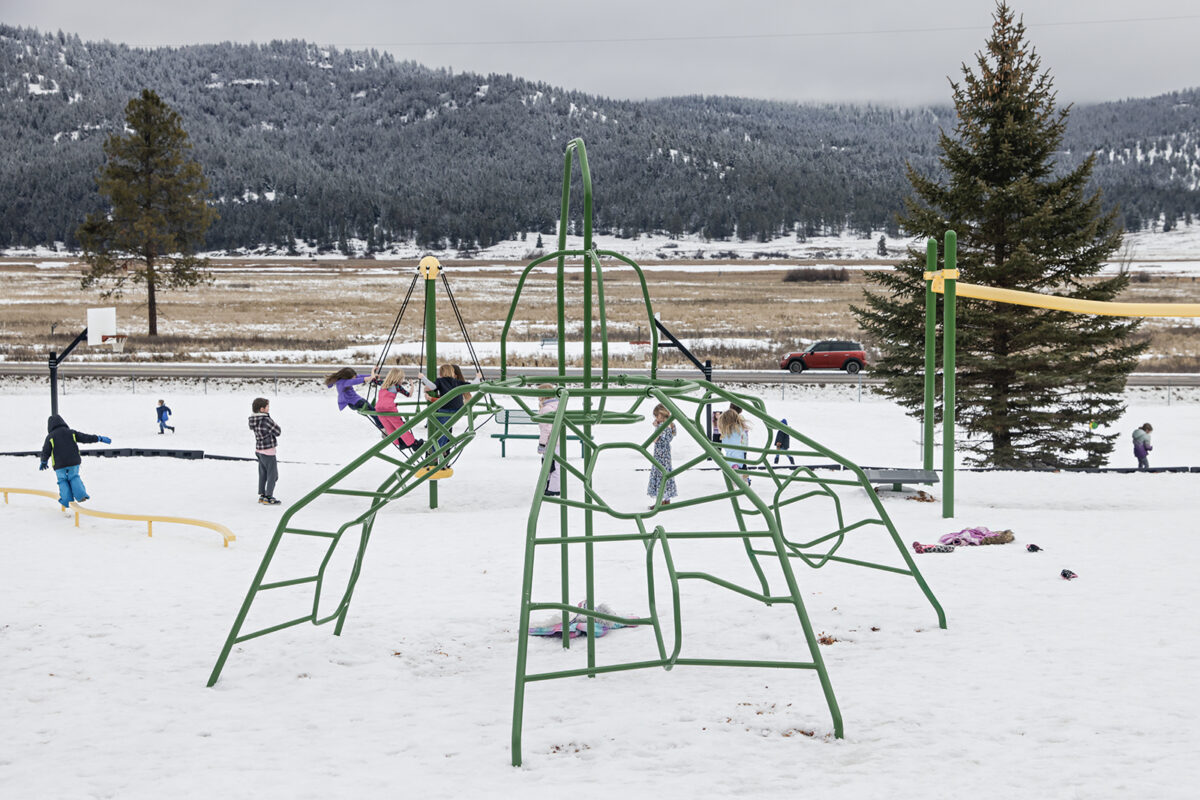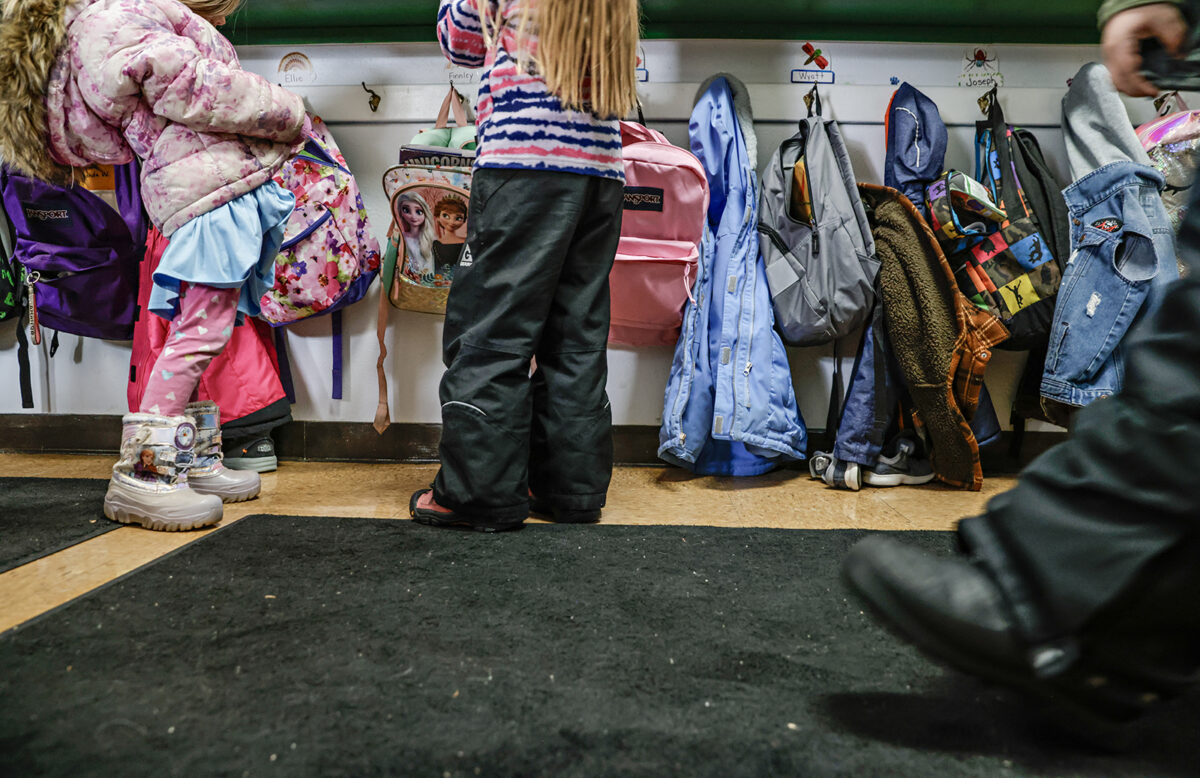Voters in Kila will be asked to approve an $8 million bond in April to expand the Kila School as the rural school district has outgrown its building amid rising student enrollment.
The Kila School is a public elementary and middle school that serves kindergarten through eighth grade students in western Flathead County. The district boundaries reach from Kila down to Montana Highway 28 and the border with Lake County, and west past the Hubbart Reservoir. The district last fall enrolled 173 students.
Educators and school board members say that the district’s outdated infrastructure has made it difficult for teachers to address growing class sizes and school safety needs. The school, which sits off of Kila Road, is comprised of three separate, unconnected buildings that house classrooms, a main office, a gym/cafeteria space and two student bathrooms. On a regular school day, hallways double as storage areas; speech language therapists, school counselors and reading specialists share one room; and the cafeteria staff works to serve students in multiple shifts in order to make sure every child gets fed.
As the district has attempted to keep up with new students and address rising concerns over security and specialized learning, the need for an updated building has become increasingly clear, local stakeholders said.

“We need classrooms, we need bathrooms, we need to address some security concerns, and we have quite a bit of congestion in our parking lot and alongside our road,” school board chair Amanda Chin said.
Chin explained that growing class sizes have put pressure on everything from bathroom usage to special services. Currently, there is one bathroom stall and one urinal for all of the district’s male students in fourth through eighth grades, meaning 55 students are forced to share one bathroom throughout the school day. The male student bathroom doubles as a custodial closet, further complicating when students can use the facility. For female students, all 40 fourth through eighth graders must share a two-stall bathroom.
Though a small feature of the school day, Chin said the bathroom issue encapsulates pressures on the Kila School that have made it difficult for students to learn.
“I think that the kids do get frustrated with that,” Kila School Principal Shannon Marshall said. “There’s only a certain amount of time in your passing period in middle school, and when there’s only a limited number of bathrooms, not everybody has the chance to go. That’s a definitely a challenge for them.”
The proposed bond will be used to add classrooms, bathrooms and a multi-purpose space to the middle school building; will create a student drop-off and pick-up loop with short-term parking spaces to alleviate congestion on Kila Road; and will enhance safety by erecting a protected main entrance and adding a fence around the school.

Marshall said that the Kila campus allows for lapses in security that have become increasingly concerning for parents. While many schools have a secure entryway where office staff can vet visitors, the fragmented nature of the Kila School building doesn’t allow for such a screening process. Visitors are expected to sign in when entering the administrative building, but without a secure entryway, it’s difficult to stop an unwanted visitor from roaming the halls. Students are also required to walk outdoors to get from classrooms to the cafeteria or gym, and vice versa.
The school expansion would create a secure entryway for office staff to screen visitors and would include the construction of a fence around the perimeter of the school.
Beyond safety and security concerns, Chin and Marshall said that teachers’ jobs have become more difficult in the post-pandemic landscape, making it even more critical that they have the space to teach their students.
“The hardest thing about COVID was the gaps in learning it created, so that you cannot teach a first grade class to a first grade level,” Chin said.
Now, the school board chair explained, teachers might be catering to three or four grade levels within one class after remote learning and pandemic-era school closures left some students behind. While the district would prefer to split grades into smaller class sizes where teachers could better address individual needs, the building is simply at capacity.
“Student population wise, we’re already at a point where we would have split classes, but we do not have classrooms to split them into,” she added.
Marshall noted that the changing nature of learning has exerted new demands on classrooms and teachers. Fifty years ago, a fifth grade classroom only needed space for a chalkboard and desks. Now, classes are equipped with tablets, smartboards and myriad other learning tools that are helpful for children, but take up space.
“With the age of some of our classrooms, it was built to be what it needed then, and our needs have just developed and grown over time,” Marshall said.
With updated classroom needs and more students, space is tight.
“A kindergarten class didn’t used to have 20 students, and now you can have 20 kids in there. That just makes the space a lot fuller,” the school principal added. “It was built for a different era, and we’re going to keep growing.”
Both Marshall and Chin understand voters’ wariness to approve a bond, which will marginally increase property taxes for local residents. Voters in Marion, Whitefish, Bigfork, Deer Park and West Valley have rejected school expansion efforts in recent years despite concerns from teachers and administrators about growing enrollment and shrinking space.
Concerns over property tax increases have become even more acute this year. Montana property owners will pay about 21% more on their taxes this year than they did last year after property values spiked across the state and the Legislature elected not to bring down tax rates.
Chin said the district has been considering a bond for years but wanted to wait until “we had a lot of information.” The current bond proposal, the school board chair said, was created with up-to-date information about everything from the school’s septic systems to asbestos concerns.

In creating the expansion blueprint, the board prepared for the future and considered growth not just two years down the line, but two decades down the line. During the expansion, the district will reconfigure its septic systems to allow for future growth beyond the current bond proposal.
While Chin understands residents’ concerns over rising tax bills, the school board chair emphasized that the increase in state property taxes will not go towards local schools, and that the Kila School is still in dire need of funding to expand its campus. Public school districts do not receive state or federal funding to address infrastructure improvements and expansions.
“There is absolutely no funding coming from anyone, as far as state or [federal], to do a major construction project like adding classrooms and bathrooms. There is no funding for that,” Chin said.
Ahead of the bond election, the district’s educators and school board members hope the community will rally around the school expansion, which has been on the minds of stakeholders for years.
“I think we have good community support, people who do care about Kila. They just have questions and they want to know what the plan is,” Marshall said.
The school district has set up an informational page on its website to answer questions about the bond. Individuals can find out how much the Kila bond would increase their property taxes by completing this spreadsheet.
Ballots will be mailed to all registered voters in the Kila School District between April 17 and 22. Questions can be addressed to [email protected].
